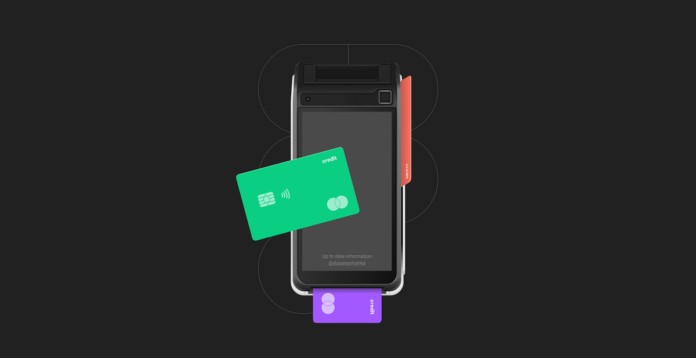The software revolution which has disrupted many industries is rapidly transforming the financial services industry. A past survey by Deloitte revealed that 84% of respondents used online banking, while 72% used mobile apps to access their primary bank. More customers are using digital channels to access services, and banks that want to increase customer engagement must improve their digital offerings.
Banks must use fintech solutions to automate, digitize, and optimize their processes. To achieve greater profitability, they must be agile and adopt new technologies that improve process efficiency.
Banking Industry in 2010 vs 2020
The banking industry has always evolved gradually. New technologies, changing customer expectations, demographics, regulatory requirements, and economics have reshaped it over the years. Banks have had to radically innovate and transform themselves to adapt to constantly changing marketplace conditions and win in the technological era.
Back in 2014, PWC predicted that technology would change everything and become a potent business enabler, reducing cost and enhancing service. At that time, 55% of bank executives considered non-traditional players a threat to traditional banks, but less than 20% felt they were well prepared for the future. Technology created a level playing field for banks and non-traditional players.
Less than 50% of the major global banks had a digital transformation initiative by the end of 2018, but the coronavirus pandemic forced them to create one. Digitalization provided new opportunities for both banking institutions and customers. Banks redesigned their systems and processes to prepare for future crises.
PWC believed that by 2020, the lowest cost–per transaction–would be up to 50% lower than it was in 2014. That might not have happened, but today, banking is more customer-focused. Digitalization in banking has enhanced customer service and service delivery. Digital banking is expected to have a 3.8% annual CAGR, generating about $8.646 billion by 2025.
Digital Transformation in the Banking Industry
Technology has transformed the way banks operate, providing remote access to software, enabling organizations to operate 24/7, and allowing employees to work from home. While moving from manual, paper-based processes to digital workflows and processes was unimaginable years ago, times have changed. For banks, sophisticated technologies have improved efficiency, enabling employees to focus on higher-value activities.
Digital transformation allows security services to be delivered quicker, which boosts customer satisfaction. It is an ongoing process that will continue in the coming years. As technologies evolve, systems will require constant updating. Banks will need to keep updating their digital systems to provide secure services.
Banks will need to adopt the right technologies to offer the most value to both employees and customers and also tackle cybersecurity issues. They will need skilled employees to turn ideas into reality using the latest software. By utilizing software with analytical, data mining. and data processing features, banks will customize offers and make the banking process safer.
Digital transformation software’s predictive capabilities make it easier for a bank to envision the transformations and challenges it will face in the future. With the data the software collects, stakeholders can make the right decisions and position the bank for success.
5 Benefits of Digital Transformation in the Banking Industry
1. Improved Customer Relationship
One of the major challenges faced by most banks is sustaining a good customer relationship. Inefficient digital services coupled with a lack of interaction directly affect the customer retainment rate. Banks should adopt digital transformation to build strong relationships with customers.
2. Saves Time
Today’s consumer doesn’t want to waste time queueing to access analog banking services. Digitalization allows for reduced waiting times and faster services, making digital banks attractive to consumers who value their time. Digital products help banks serve customers quicker.
3. Convenience
Online banking services are available every day, even on weekends. Customers don’t have to wait for the nearest physical branch to open to perform financial transactions. Digital transformation offers customers one big benefit: convenience. They can access their accounts from anywhere and transfer money in real-time.
4. More Efficient Banking Processes
By creating banking applications for smartphones and implementing innovative technologies such as electronic signatures, banks eliminate manual processes and improve efficiency. Customers can make automated transfers for bill payments and banks can use technology to keep transforming their services.
5. Keeping Up with Ever-Changing Consumer Needs
Digitalization makes it easier for banks to provide relevant digital products and keep up with constantly changing customer needs. By creating banking apps, allowing customers to conveniently pay for online goods, and providing e-wallets, banks enable customers to take full advantage of their services. They can also use customer information to provide personalized products.
3 Challenges of Digital Transformation in the Banking Industry
1. Cybersecurity
Cybersecurity is a major challenge in digitalization. While mobile apps and online banking sites have frequently updated security features, no system is foolproof. Even the most sophisticated software can get hacked. Online banking is also susceptible to phishing and scamming.
2. Expensive Hardware and Personnel Requirements
Digital technologies require highly-skilled specialists for effective implementation. And as time passes, some hardware and software become obsolete; so banks have to upgrade their systems. Cutting-edge technology and specialists require significant capital investment.
3. No Personal Touch
In the past, consumers would develop a relationship with a banker if they visited a traditional bricks-and-mortar location frequently. With digital banking, customers are assisted by anonymous customer service agents. When someone is in a financial bind, they need someone who knows them well and can help.
A Real-Life Case Study: French Startup Shine
When Shine decided to create a professional bank account for freelancers ranging from 18 years to 60 years, it kept things simple. It provided a bank account, an invoicing tool, tax forecasting, a free MasterCard, and financial support. The company also ensured it had an excellent rating on the App Store and many positive reviews to attract freelancers.
The company made freelancers trust it more by directly enhancing the end-user experience. And its efforts paid off. It has attained an 80% app conversion rate. The company’s next step is to make app users fully active, retain them, generate revenue, and turn users into brand ambassadors.
Summing Up
Digital transformation has allowed banks and financial institutions to know what consumers actually want. They can design financial services and offers based on customer needs rather than guesswork. Digital transformation allows banks to strengthen customer engagement with personalized offerings, resulting in better service delivery.








